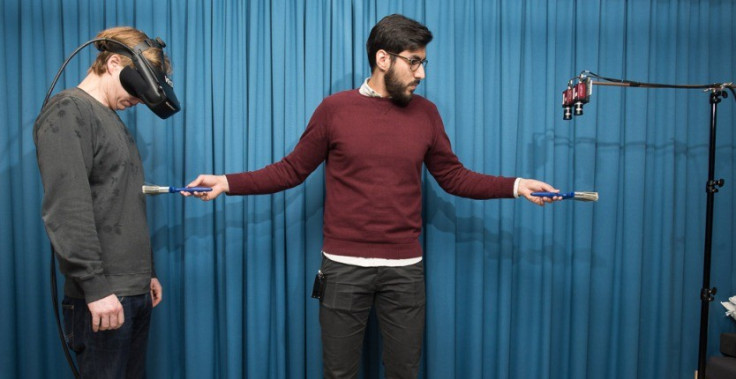What does it feel like to be invisible? Pretty relaxing

Neuroscientists at Karolinska Institutet have created an illusion of invisibility and showed how this affects the body's stress response in socially stressful situations.
The participant wearing a pair of "virtual reality" goggles when asked to look down at his body sees empty space.
To enhance the experience of an invisible body, researchers used two broad brushes, one of which touched the subject's body at different locations while the other carried out the same moves in thin air, fully visible to the subject.
The participants felt the sensation at different places as seen but on looking down saw only space, affirming the feeling of invisibility.
Within a minute they started to transfer the sensation of touch to the portion of empty space where they saw the paintbrush move, to the invisible body in that same position.
In a previous study the team had shown this effect of illusion for a single hand.
This study shows that the "invisible hand illusion" surprisingly can be generalised to an invisible whole body, says Arvid Guterstam , first author of the current study.
Cognitive behaviour under stress
The sensation of invisibility reduced the participants' anxiety in social settings (they saw an audience of "serious-looking strangers" watching them) in another part of the study.
The heart rate and self-rated stress level during the performance was lower immediately after they experienced the invisible body illusion compared to when they felt they had a physical body.
These results are interesting because they show that the experience of the body's physical characteristics can alter how our brain processes social impressions, says Arvid Guterstam. It could help be a possible treatment strategy for social phobia.
The researchers would make a stabbing motion with a knife toward the opposite empty space visible to participants. The participants' sweat response to seeing the knife was elevated while experiencing the illusion. The brain interpreted the move as a threat towards the subject's body.
As the 125 subjects experienced varying depths of invisibility, based on conditions, the team believes a patient can be given an invisible body and then gradually made more visible in stages to possibly address social stress.
The article is published in the scientific journal Scientific Reports.
The Stockholm team plans to explore whether invisibility affects moral decisions. To film goers this is what was seen in Hollow Man, who turns invisible and sees the evil side in him take over under the cloak of invisibility.
This losing of a sense of right and wrong was argued by Plato two thousand years ago, says Henrik Ehrsson , a professor at the Institute of Neuroscience and one of the researchers behind the study.
© Copyright IBTimes 2025. All rights reserved.





















